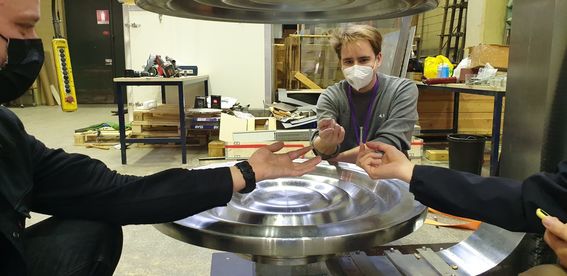LAB

MRI provides high soft-tissue contrast and is capable of generating anatomical images with high resolution and speed. The inherent limiting factor in exploiting these features is the signal-to-noise ratio, which is proportional to the magnet’s strength. The continuous pursuit of high-resolution images within as short time as possible has led to strong superconductive magnets with field strengths of 1.5 and 3 tesla. Recently, 7 tesla scanners have been introduced.
Field strength determines costs (~$1M/T), safety measures, required facilities, and expertise in operating the system [2]. The high field magnet scanners are expensive and costs are not limited only to the price of the scanner. The requirements for the operating environment are also high and increase with the field strength. The operation of a high field MRI unit assumes highly educated personnel. The strong magnet and high excitatory radio frequency power also causes safety risks for the people. These issues make the running costs of a high field MRI the most expensive radiology service. Due to the costs and the required infrastructure MRI scanners are mainly used in hospitals.
The AMRI project aims to identify new MRI concepts of high value in some applications where accessibility in terms of safety, costs, availability, and mobility is of significant importance. There are also several essential applications, which would benefit from openness and a possibility to bring life-supporting or monitoring pieces of equipment close to the magnet. The scanner’s safe operation enables automation of the imaging process, and the image-based diagnosis may be delivered via teleradiology.
The AMRI scanner platform is composed of a VLF MRI scanner and a computer simulation platform. The scanner is based on a permanent magnet producing a VLF range, below 0.1 T, for whole-body imaging. Technology enables a more compact device design and transformability. The scanner will be used for collecting empirical data for the development of computer simulation tools. This research environment is used for modelling and optimization of VLF MRI systems for the chosen applications. The operation at a VLF range enables fulfilling the above-listed requirements for accessibility. The downside is that the signal to noise ratio will be significantly lower than at high field operation. When this is considered, one may find several health and wellness applications where VLF MRI provides high value due to good tissue contrast and accessibility.
Assembling of the AMRI test platform continues and we have the pole shoes in place and started to test the magnetic field.